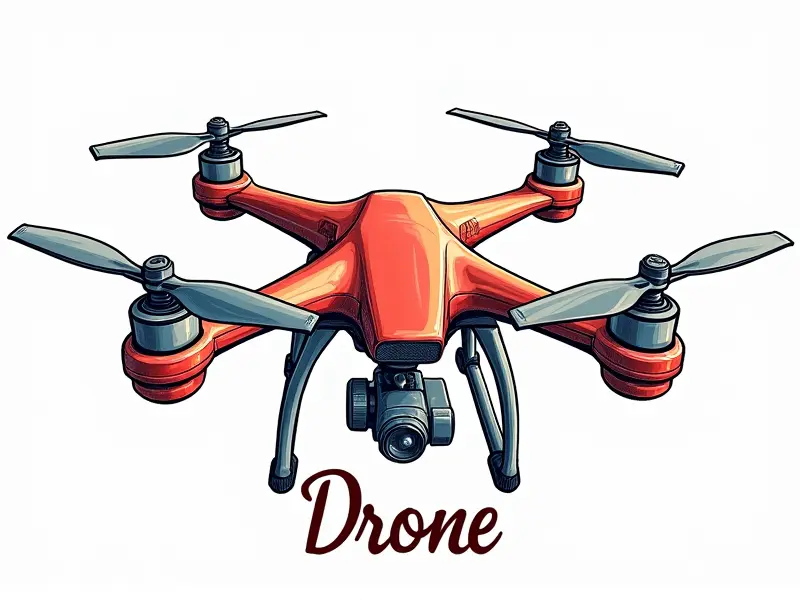FPV drone camera field of view?

Understanding FPV Camera Field of View
The field of view (FOV) in the context of FPV (First-Person View) drones is a critical aspect that significantly influences the pilot's ability to navigate and control their drone. The FOV determines how much of the environment around the drone can be seen through the camera feed, impacting both performance and enjoyment during flight.
Optimal Field of View for FPV Drone Pilots
Choosing an optimal field of view is crucial for FPV pilots to achieve a balance between situational awareness and maneuverability. A narrower FOV provides a more focused view that enhances precision, while a wider FOV offers better peripheral vision which can be essential in avoiding obstacles or tracking fast-moving objects.
Maximizing Your FPV Experience: Camera FOV
To maximize the FPV experience, it is important to understand how different camera settings affect your flight. A well-calibrated field of view ensures that you have a clear and unobstructed view during high-speed maneuvers or complex aerial acrobatics.
Factors Influencing FOV Selection
- Purpose: Racing, photography, or general flying.
- Drone Type: Racer vs. camera drone.
- Camera Lens: Fixed focal length or adjustable.
Wide vs Narrow FOV in FPV Drone Racing
In the high-stakes world of FPV racing, pilots often prefer a narrow field of view to maintain sharp focus on their path. This helps them navigate through tight courses and make precise turns at high speeds.
Narrow Field of View Benefits
- Enhanced precision for maneuvering in close quarters.
- Better concentration during intense racing conditions.
Best Practices for Setting FPV Camera FOV
To set the ideal field of view, follow these best practices:
Calibration Tips
- Test Different Settings: Experiment with various FOVs to find what works best.
- Adjust for Specific Scenarios: Tailor your FOV based on the type of flight you plan.
How to Adjust FOV on FPV Drones
The process of adjusting the field of view varies depending on your drone model and camera setup. Here’s a general guide:
Steps for Adjustment
- Access Camera Settings: Locate the settings menu in your FPV system.
- Select FOV Option: Choose from preset options or manually input values if adjustable.
- Test and Iterate: Fly with the new setting and refine as necessary.
The Impact of FOV on FPV Performance
A carefully chosen field of view can greatly enhance performance in various aspects such as speed, agility, and safety. A wider FOV might be preferred for beginners to provide a broader sense of orientation, whereas experienced pilots often opt for narrower settings.
Performance Enhancements
- Faster Decision Making: Narrower FOVs aid in quicker decision-making during races.
- Better Navigation: Wider FOVs help with situational awareness and obstacle avoidance.
Enhancing Visibility with Ideal FPV FOV
Selecting the right field of view is essential for clear visibility. A well-chosen FOV ensures that you can see all critical elements in your environment, enhancing both safety and enjoyment during flights.
Visibility Improvements
- Clearer Visuals: Minimize distortion and ensure a sharp image quality.
- Better Focus: Keep the focus on what matters most for your specific flying style.
Choosing the Right FOV for FPV Racing
In racing scenarios, selecting an appropriate field of view is crucial. Pilots typically favor narrower settings to maintain a focused perspective and execute precise maneuvers.
Racing Tips
- Precision Over Broadness: Opt for narrow FOVs to enhance control over the drone.
- Practice with Varying Settings: Experiment during training sessions to find your sweet spot.
Understanding FPV Camera Angle and FOV
The angle at which an FPV camera is mounted also influences its field of view. Adjusting the mount can provide better visibility or a more immersive racing experience, depending on your needs.
Influence of Mount Angles
- Horizontal Angle: Affects side-to-side visibility.
- Vertical Angle: Influences up-down perspective.
Maximizing Your FPV Drone Camera View
To get the most out of your FPV drone camera, consider all aspects that influence its field of view. From selecting the right lens to adjusting mount angles and FOV settings, every detail counts in achieving an optimal flying experience.
Maximization Strategies
- Combine Multiple Settings: Use a combination of narrow and wide FOVs for different scenarios.
- Maintain Regular Adjustments: Continuously tweak settings to match evolving flying styles and conditions.
Conclusion
The field of view in FPV drones is a critical parameter that significantly impacts the pilot’s experience. By understanding how different FOVs affect performance, visibility, and overall enjoyment, pilots can make informed decisions to enhance their flights. Experimenting with various settings and angles will help you find the perfect balance for your specific needs.

